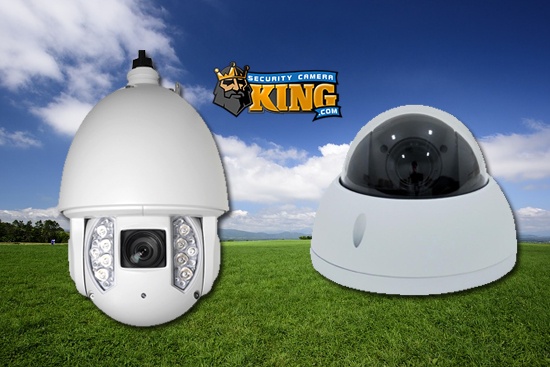Onboard POE Tutorial
We wanted to take the time to put together an Onboard POE Tutorial to help users set up IP Cameras on their embedded POE NVRs. So we did!
IP cameras can connect to their NVR or Hybrid DVR recording stations over a computer network, but this can be accomplished in a few different ways. One of the more plug-and-play methods for smaller installations is to use an NVR which is built on onboard POE. While intended to be mostly plug and pl;ay, its stil ll a ghood idea to read through this Onboard POE Tutorial, and watch out Onboard POE Tutorial video to get an idea of what the steps are, and what to do if you run into a hump.
IP cameras use what’s called an Internet Protocol Address- or IP address for short- to communicate their audio and video data via Ethernet cable over a computer network. Ip cameras can be paired with hybrid DVRs capable of using both COAx and IP cameras. However, a newer type of recorder- a Network video recorder or NVR for short- was invented to better handle the data from IP cameras. NVRs also often provide more features for IP cameras than hybrid DVRs, and often even feature plug and play type solutions to make setup and installation easier.
Not every NVR is plug and play, and many require adding cameras to the system from an external network that both the NVR and cameras are connected to. IP cameras are usually powered by POE- which is short for Power over ethernet. This allows a single cable- the ethernet cable- to provide power, and supply a pathway for audio and video data from the camera to and from the recorder. This is always done with the aid of POE injectors, or more commonly, a high-quality POE network switch.
Newer NVRs feature onboard POE ports, usually ranging from 4- 16. This allows the user or installer to plug their cameras directly into the NVR recording them. When using our Elite Series recorders and cameras- this creates a plug and play process that’s super simple and gets you a connection right away. We’re going to show you how to connect a brand new camera- to a POE NVR today to help guide you through that process. There are a few things you’re going to need in order to be successful, and some tips you’re going to want to keep in mind. So let’s go over that info first.
You’re going to either need a local monitor attached to your recorder, along with a mouse
-and /or
A windows pc confirmed having the ability to access the recorder over the local network via Internet explorer. This is what we use in the video, but the process and appearance are mostly the same either way.
This guide on Adding an IPC to a POE NVR is for new and uninitialized Elite or E series cameras. This guide is not for third-party cameras, whose compatibility over onboard POE will be limited and not guaranteed. They may work with some advanced configuration, but you’ll need to consult your camera manufacturer to see if it features ONVIF and what settings to manually input into the recorder. With our Cameras, you won’t have to worry about this if they’re new in-box. You may also have issues if you’re trying to utilize a previously used and paired Eliteor E series camera that’s already been assigned an IP address. For those- you would want to default them to an uninitialized state.
You’re going to need an ethernet cable for testing the connectivity of the camera before mounting. We always recommend testing a camera’s functionality, and to do this on a shorter run before mounting to avoid headaches. Ok, let’s get started.
Adding an IPC to a POE NVR – The Guide
Firstly ensure your POE NVR is on, and you’ve already run through the introductory setup. Username, password, etc. If not finish this, then return to the guide.
Starting with the camera you want to be channel # 1, remove the camera from its packaging, and then set it aside. If you have more than one camera, it’s up to you if you want to remove them all from the packaging now. This process entails connecting one camera at a time, not all of them at once- it may be easier to keep things organized and clear if cameras that haven’t been used yet are left in the box until needed.
Next connect the camera you want to use as channel one, into Port One. Note that again we are only connecting the one camera for now,m and we are not connecting it randomly but deliberately to port 1.
Give the system up to 3 minutes to power on the camera, recognize it, assign it an internal IP address, and register it. All of those processes occur automatically when using our cameras with one of our POE NVRs. When this is completed you should see it pop up in the live view.
At this time, if you wanted to add a second camera, leave the first one connected and add the second. Repeat the process as needed until all your cameras are connected. That’s all there is to it!
Thanks for joining us today as we showed you how the process of Adding an IPC to a POE NVR. IF you encountered any issues with this process using our camera sand recorders, or for any questions about availability or compatibility please, give our techs and sales team a call at 561-288-5258 . Until next time, stay safe!
Related: What’s the difference between DVR and NVR?
Related: What’s the difference between H264 and H265?
Related: IP PTZ Security Cameras – All There is to Know
Related: Resolution, and why does it matter?
Related: What are active deterrence cameras?
Find Us On: Facebook | Twitter | YouTube











